
If Microsoft is serious about accessibility, fix Windows 11
Microsoft’s Skill Summit this week highlighted how the business is incorporating accessibility into the structure of Windows 11, Microsoft Edge, and especially its extraordinary peripherals, but the problem has to be requested, yet again: Could Microsoft do more to make Home windows 11’s Start off menu and taskbar a lot more obtainable to aging consumers?
I’m blessed ample to be flawlessly mobile, with the ability to use a mouse, keyboard, and Xbox controller without any supplemental help. But I’m also a single of probably hundreds of thousands of buyers whose vision is slowly but surely having worse above time. That, of system, is nothing new, and we have glasses and corrective lenses to compensate.
But my eyesight disintegrated through the pandemic, as I was cooped up indoors and did not have as lots of chances to generate, acquire outings, and usually have interaction my distance eyesight. My youngest son, who endured two many years of remote studying, experienced the very same detail. And nevertheless you perspective what occurred more than the earlier several yrs, it is evident that all those consumers who began computing when Windows 1. released in 1985 are finding more mature.
This matters. The ability to use a laptop or computer is largely predicated upon the means to see. Experiments have linked very poor visible perform to depression and social isolation simply for the reason that of an incapability to interact with the entire world about them. And whilst Windows presents assistive systems for those who have intense eyesight impairment — Narrator, Windows’ constructed-in display screen reader — there absolutely is a center ground for those people who can see perfectly enough to use a laptop but have trouble navigating by means of a variety of menus.
Could Home windows 11 accommodate this, with bigger icons and a resizable Start off menu and taskbar? And could Microsoft do a superior job with its approaching Begin folders in this regard? I imagine Microsoft could, and its reluctance to have interaction on the challenge is a small puzzling.
In a moment, we’ll chat about what you can do to compensate for Microsoft’s final decision, and assist make these components of Home windows 11 extra accessible. But I’m not confident if Microsoft simply just intends for you to rely on these approaches or if they program more improvements for Home windows 11. I have addressed questions to Jenny Lay-Flurrie, chief accessibility officer at Microsoft — at the time on social media, as soon as at Microsoft’s accessibility press event — and been given no response.

Mark Hachman / IDG
Windows 11’s Taskbar: Difficult to parse
Windows 11’s taskbar throws up a few hurdles in the way of accessibility: The taskbar by itself is not moveable or resizeable, the icons are not equipped to be independently enlarged, and taskbar buttons are usually put together. Home windows 10 makes it possible for you to regulate the to start with and third factors. Not combining taskbar buttons will allow somebody to generate a massive taskbar landing space whose function is obviously discussed, as it is in Windows 10.
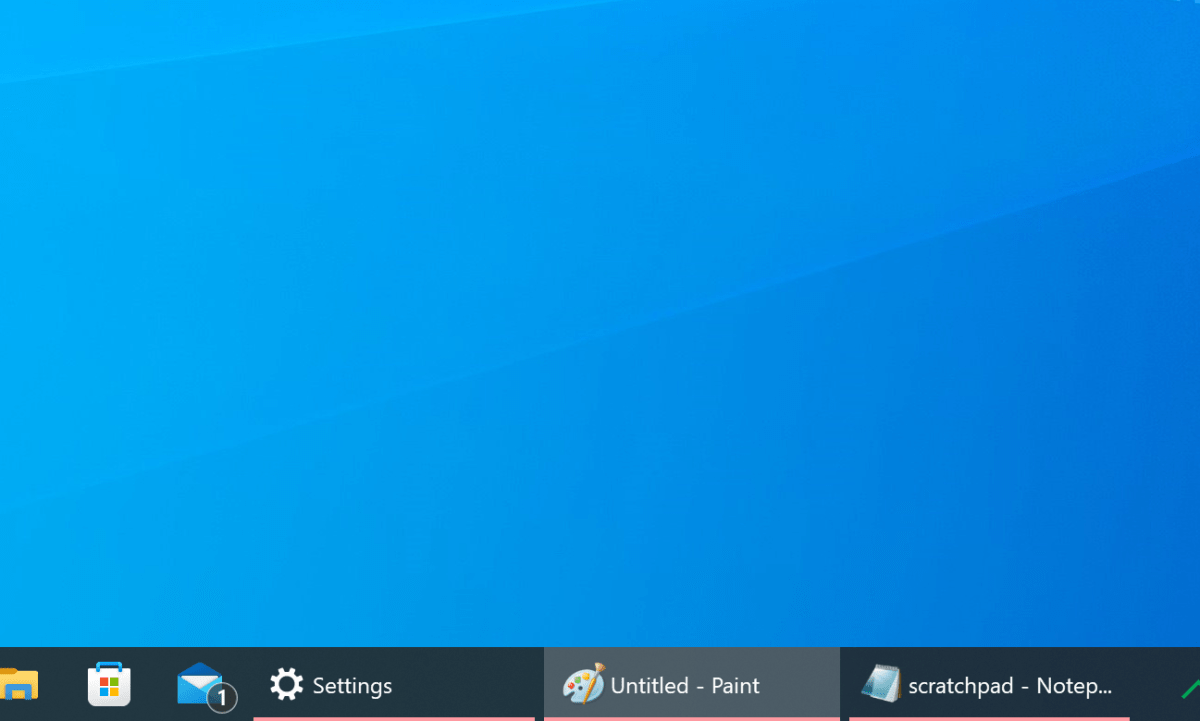
Mark Hachman / IDG
Weirdly, Windows 10’s Options menu (right-click the taskbar to entry it) lets you to make the icons smaller, not larger, which would also appear to be an problem for more mature end users. But Windows 11 basically doesn’t give the versatility of Home windows 10 in terms of configuring the Start out menu.
By now, you’re probably acquainted with the restrictions of Home windows 11’s Start off menu: the entire window just can’t be resized, its icons measurement can not be altered, and the lack of Dwell Tiles also restricts the size of the icons. In Windows 10, you can enlarge the Start out menu icons to relatively massive dimension, not only producing them simple to browse and navigate to, but also enabling you to visually remind yourself which applications are the most vital, what they’re known as, and the place they reside. (Though this might appear foolish to you, believe of the problems some more mature family members customers can have with navigating a computer system.)
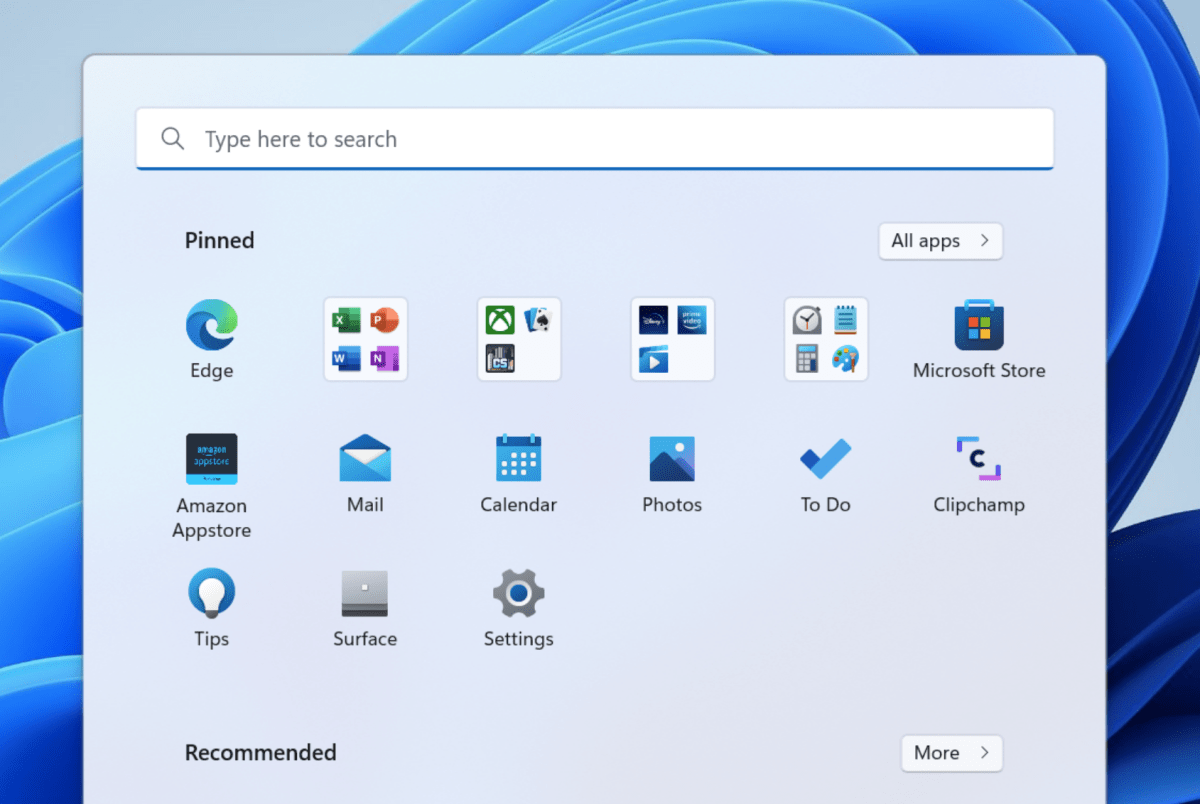
Microsoft
A single beneficial organizational software that Microsoft provided in Home windows 10 ended up Commence folders, which grouped relevant purposes with each other. All those ended up left out of Home windows 11, but we have presently been equipped to acquire a glimpse at them and examination them out as aspect of the Windows 11 Insider program.
In equally Windows 10 and Home windows 11, Commence folders truly shrink the dimension of the icons they comprise, making them much less noticeable. I have by no means recognized this selection. At minimum both functioning methods create popout menus housing much larger variations of the very same icons when you simply click on them.
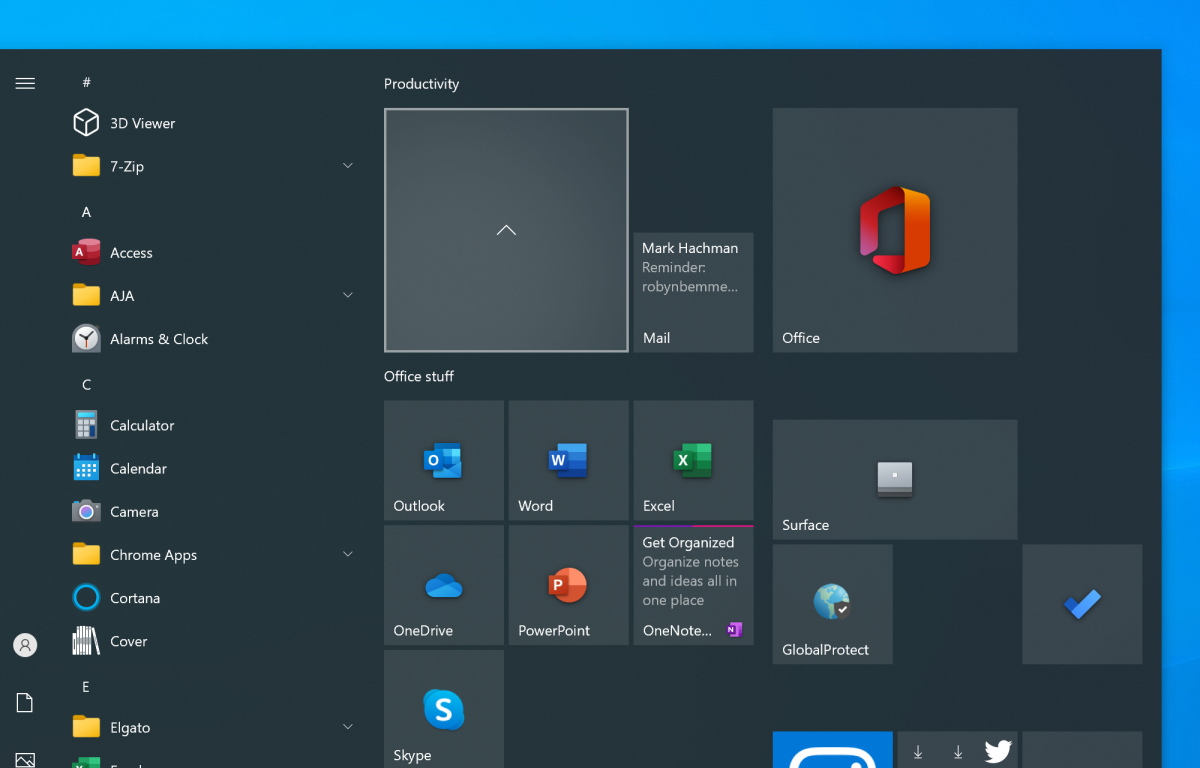
Mark Hachman / IDG
If Microsoft isn’t going to return to Dwell Tiles, which is high-quality. But why just cannot Microsoft supply a resizeable Windows 11 Start out menu that can be enlarged if essential? The possibility for more substantial, separately resizeable icons? Get started menu folders that can also be resized and rearranged? A taskbar that can be modified to extend and fill the accessible house with tiled icons?
This shouldn’t be the domain of a 3rd-party mod like Start11 or even Microsoft’s excellent PowerToys. I would argue that these are not aesthetic choices, but purposeful ones. Available kinds. Restricting accessibility at the literal Start off-ing point of the Home windows 11 working experience must be a minor embarrassing for all involved.
Workarounds: What you can do in the meantime
No matter whether Microsoft chooses to consider action or not, you do have a few solutions for producing Home windows extra visually available applying its constructed-in resources.
Resize desktop icons
Initial, you can resize the icons floating on your desktop. (No, this does not influence the icons on your taskbar or the Start menu. Why not?)
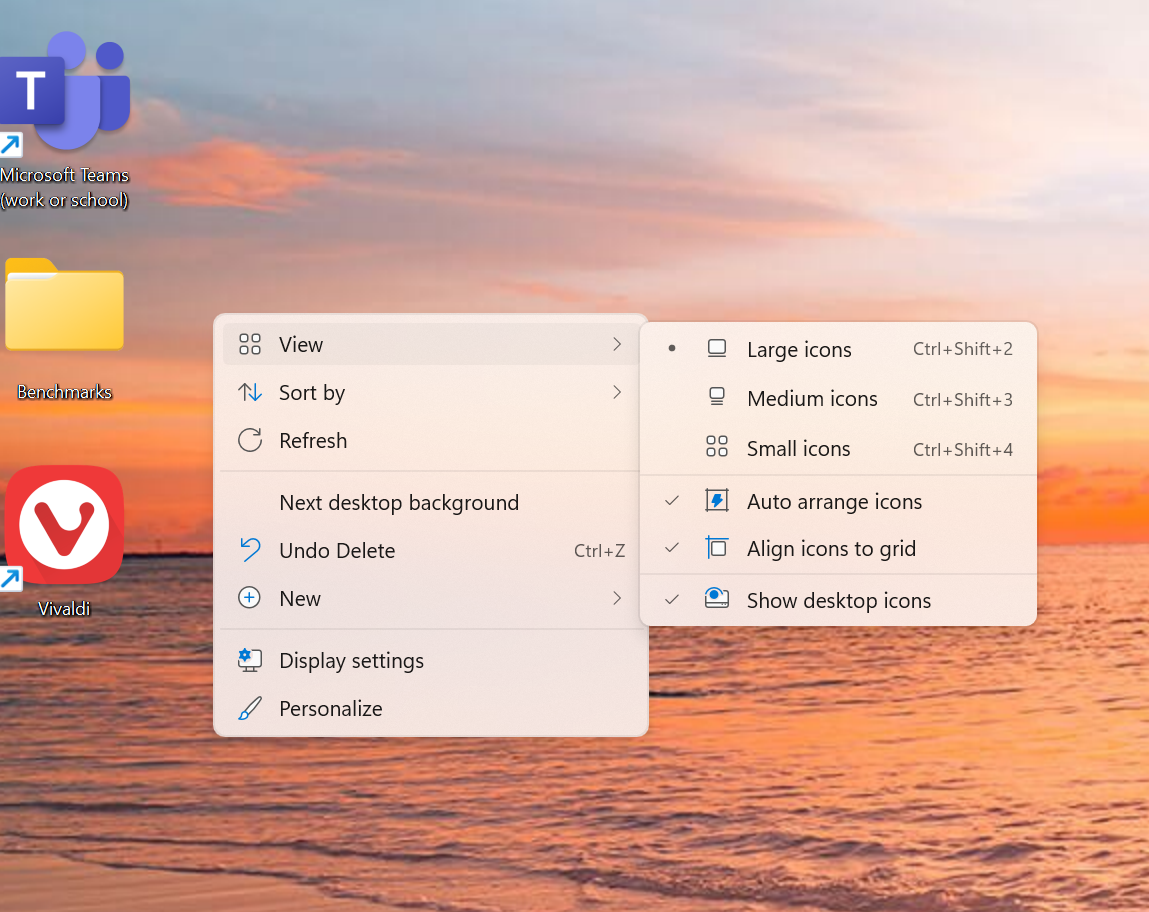
Mark Hachman / IDG
Simply ideal-click your desktop and navigate to Look at on the drop-down menu. You are going to then have a alternative to find between Big, Medium, and Modest icons, and you can choose what will work for you.
DPI Scaling
The upcoming alternative is what’s regarded as DPI Scaling, or just Scale. The alternative can be located inside the Home windows 11 Configurations menu. (System > Screen > Scale) Listed here, you are going to find a fall-down menu with a range of percentages to decide on from, as very well as a “recommended” setting.
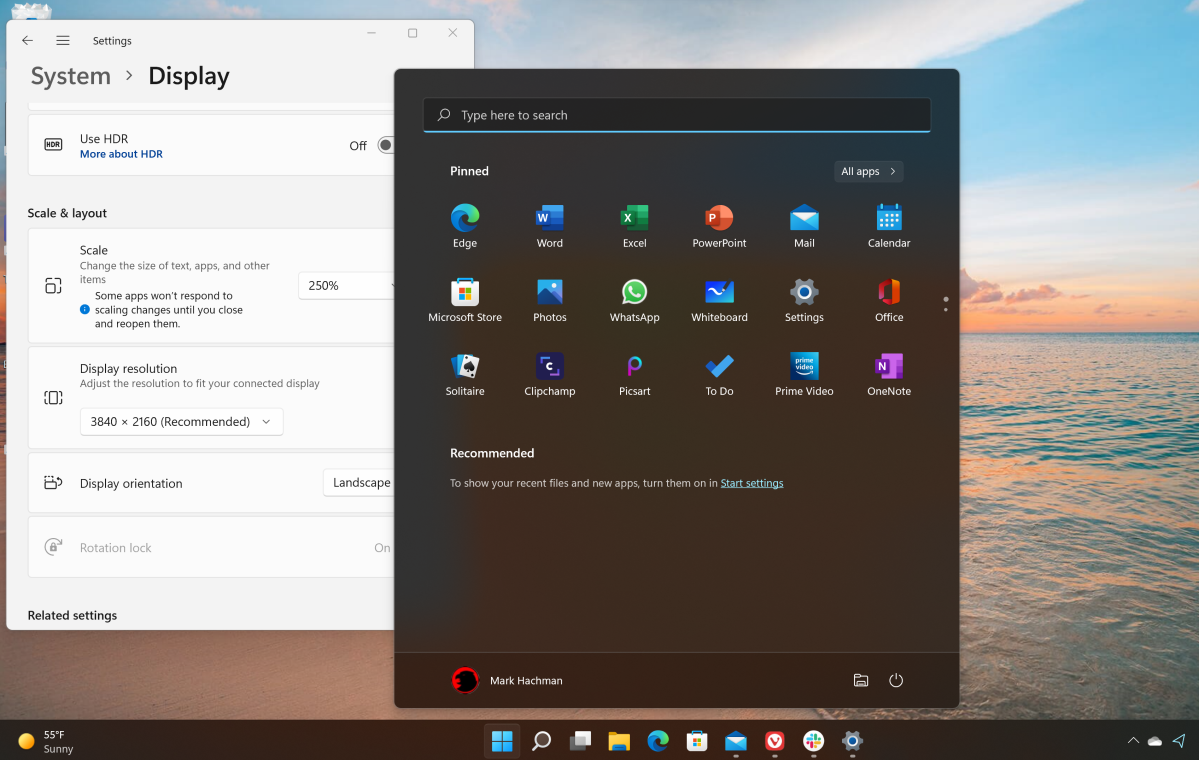
Mark Hachman / IDG
Scale is a “universal” command that will resize everything: text, UI components, browser windows, Start off, the Taskbar — the functions. It is an effortless way to enlarge all of the visual aspects on your display screen — and, to be fair, may well characterize what Microsoft thinks to be the most universally available way of expanding the visibility of the Home windows UI. It however does not tackle the potential to resize or modify Start off, but it will make all those Home windows factors much more obvious.
The only trick that Scale hides is that it is controllable on a for every-screen foundation. So if you type on a notebook monitor but also use a secondary check as your key screen, make sure to modify both equally the way you’d like them. It may possibly extremely perfectly be that you are going to have two impartial options for both shows.
Use Magnifier
The 3rd choice is Magnifier, which can be employed as a literal electronic magnifying glass. Magnifier can be managed through the Home windows 11 Settings menu (Accessibility > Magnifier) and can be toggled on by typing Gain + + (aka tapping the “Windows” and the “plus” important simultaneously) and turned off by Gain + ESC. Note that the Settings menu controls how “strong” the Magnifier is, so you could want to “turn it up” by expanding the share. Magnifier can also be made use of in a total-display screen manner or as a “lens,” which to me appeared somewhat handy.
When in Magnifier manner, your cursor interacts with the display as usual, so you can remaining- and suitable-simply click on various visible components.

Mark Hachman / IDG
Of class, you can also use Windows’ have means to browse and navigate by voice, possibly in just Term or via Windows Narrator. I would not recommend applying Narrator if you can previously visually navigate all-around Home windows, as it tends to get in the way. If you have issue looking at, even so, it can be priceless.
All over again, you could have no trouble reading through your display, and navigating Home windows. It’s honest to say, nonetheless, that a sizeable percentage of consumers who grew up on Windows may be acquiring hassle with Windows 11. The created-in accessibility applications in just Windows may well be a great initially move, but Microsoft’s Capacity Summit should really also be an situation to re-analyze what is improper with Windows 11.
